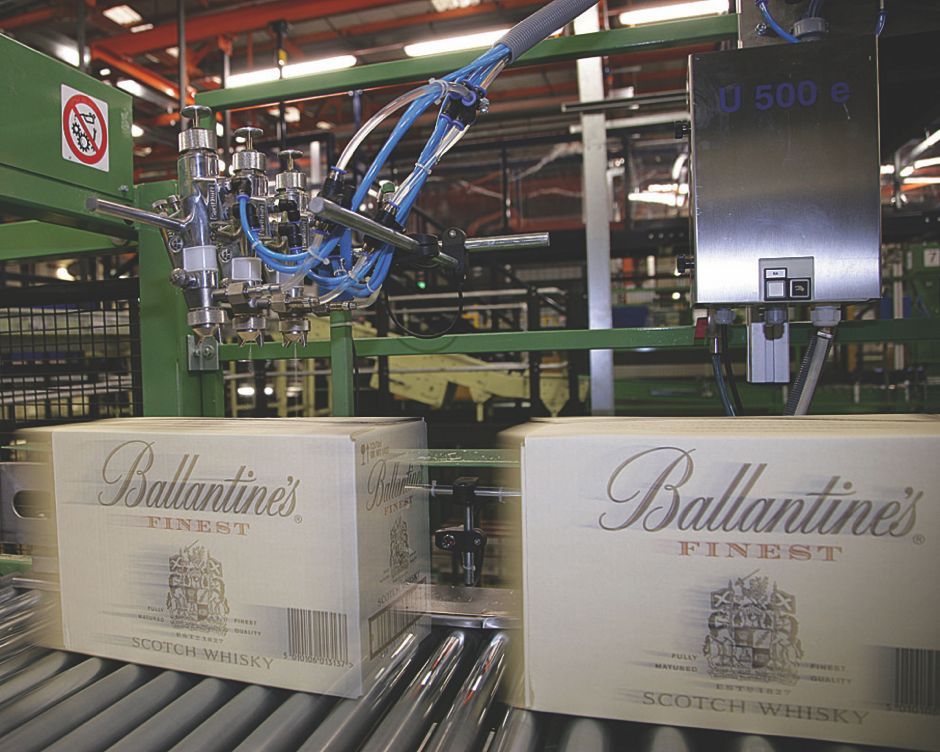Looking at costs and ways of reducing them in the current economic time has never been more of an imperative. New UK tax legislation, introduced in 2022 focusing on the volumes of plastic packaging used by companies, creates further challenges to the operating costs and profitability of manufacturers in the food and beverage sectors.
Finding innovative solutions to simply retain margin levels has become a constant challenge and has seen companies alter strategy to ensure that whilst focusing on making processes more efficient the big focus needs to be aimed on doing processes differently. This is where the big gains are to be realised.
Traditionally the LOCK N’POP™ pallet stabilisation solution allowed companies to save money by removing the costs associated with their palletised goods moving or collapsing in transit to their customers. The focus was on ensuring efficiency in the production process and throughout the subsequent transit journey whether to the supermarket shelf via domestic distribution centres or to international markets via sea, rail and road freight. The necessity to ‘do things differently’ has seen many companies using the LOCK N’POP™ solution, now, as a means of reducing plastic packaging costs. The key driver for using the solution has shifted from reducing the costs associated to pallet instability to reducing the costs associated with the use of high volumes of plastic packaging within their production facilities.
LOCK N’POP™ provides a solution that can reduce the use of stretch wrap and eliminate the need for layer sheets and corner posts, sometimes an essential to ensure acceptable stability.
Plastic stretch wrap has a cost and typically a manufacturer could be spending 80p/pallet. If layer sheets are also needed the cost can easily exceed £2.00/pallet. In addition, if corner posts are also needed this additional cost can exceed £1.00/pallet, simply to ensure goods are delivered securely.
With a typical cost of 20p/pallet for LOCK N’POP™, the cost saving potential is very clear. By simply reducing wrap by 50% and applying LOCK N’POP™ a net saving of 20p/pallet is achieved. In a production facility producing 100,000 pallets a year this equates to an annual saving of £20,000. In todays economic climate this level of operating cost reduction is too valuable to ignore. With a 200 gramme saving per pallet the associated reduction in plastic volume would be 20 tonnes, a figure that would attract a taxation burden in the thousands of pounds.
UK companies, large and small, are experiencing these level of savings with two recent customer installations being on target to achieve a reduction of 17 tonnes and 21 tonnes in annual stretch wrap consumption.
So how does it work? LOCK N’POP™ pallet stabilisation uses a cold, water based cohesive that is applied inline to the cases, bags, shrink wrap trays etc. immediately prior to palletisation. The unique cohesive has high shear strength characteristics which LOCKS the products together resulting in a stable pallet. However, the magic is that the cohesive combines this high shear strength with a low tensile strength which means that the items can easily be separated. So, stable in transit but easy to separate at distribution centres and end users.
Known as the Invisible adhesive, this ability to leave the product unmarked is becoming imperative as more and more customers need to be able to place products straight from pallet to shelf in retail ready packaging. As the requirement increases for higher levels of printed artwork on outer case packaging the ability to palletise and transport securely without damaging the presentation of the product is becoming a bigger requirement of food and beverage manufacturers.
Blue chip companies throughout the food, beverage, animal feed and industrial sectors have been using LOCK N’POP™ for over 25 years to stabilise their pallets. In some cases there has been no alternative to applying very high wrap tensions to ensure pallet stability. This results in deformed cases and customer complaints. With the addition of LOCK N’POP™ to supply the required stability, wrap tension can be reduced and the associated damage eliminated. Cost savings have also been achieved by allowing the use of lower micron wrap which proves sufficient when the stability is provided by the LOCK N’POP™ cohesive.
This well known technology is helping more and more producers to save money by allowing them to reduce their use and spend on plastic packaging and by ensuring that their products get to their customers without transit damage.
LOCK N’POP™ pallet stabilisation is a different approach. For more information contact us at Gransden UK Ltd



